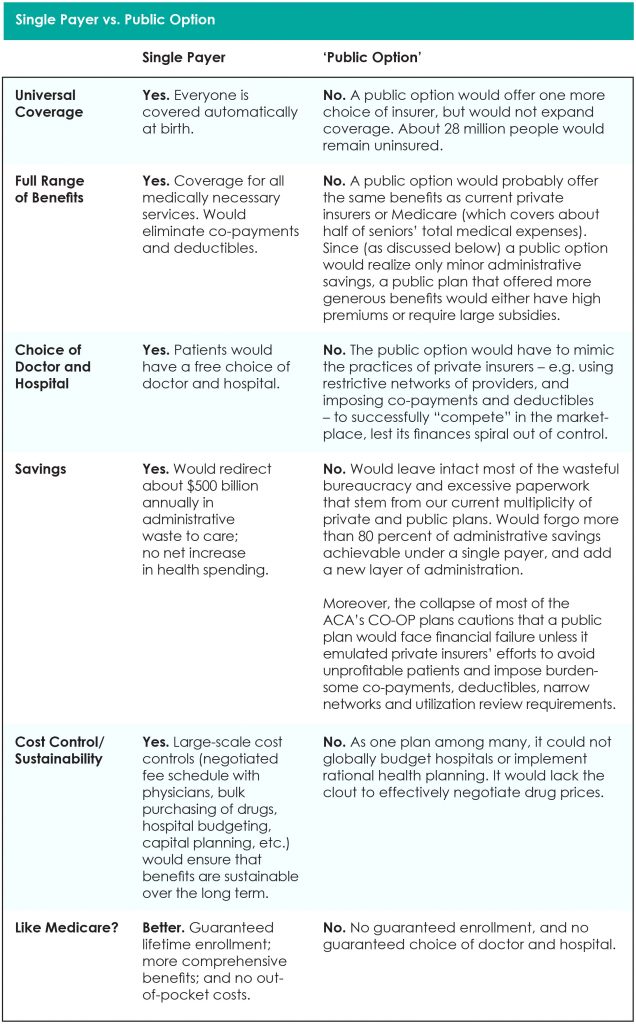
During the 2009 debate that resulted in passage of the Affordable Care Act, some policymakers and elected officials called for a “public option” to provide an additional source of coverage and competition. Although this provision was dropped from the final legislation, it has resurfaced periodically as premiums and deductibles have spiked, provider networks have narrowed, and insurers have quit various state exchanges.
A public option may sound appealing as a means of checking commercial health insurers, but in reality it would be a very limited policy that would offer no genuine fix for what ails our current health care system.
PNHP co-founders Drs. Steffie Woolhandler and David Himmelstein argued that “The ‘Public Option’ on Health Care Is a Poison Pill” in The Nation, predicting that it would function in much the same way that Medicare Advantage does, with commercial insurers pushing sicker and costlier patients onto the public plan and policymakers favoring the insurance industry at every turn.
PNHP’s senior health policy fellow, Dr. Don McCanne, also wrote a detailed account of why advocates should temper their enthusiasm for the public option. And PNHP has developed a table, below, that contrasts the public option with single payer. (This table can also be viewed as a PDF, here.)
Other noted health policy experts have weighed in on the insufficiency of a public option, including former Centers for Medicare and Medicaid Services Administrator Dr. Don Berwick, who testified before Congress as part of a June 2019 hearing on universal health coverage. He explained how a public option that covered only the sickest patients would be a gift to commercial health insurers.
The Affordable Care Act, despite its gains, is clearly insufficient to address our most urgent health care needs, and adding yet another layer to our already fragmented system is not the answer. To learn more about a system that would improve efficiency, equity, and affordability – a single-payer national health program – please click here.
